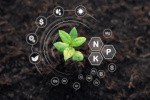 Abiotic stress tolerance in plants
Abiotic stress tolerance in plants
Guest Edited by Claudio Inostroza-Blancheteau, Isabel Marques and José M. Mulet
 Climate-smart soils to enhance sustainable crop yield
Climate-smart soils to enhance sustainable crop yield
Guest Edited by Walter Mupangwa, Debadatta Sethi and Muhammad Shaaban
 Omics technologies and applications in horticultural crops
Omics technologies and applications in horticultural crops
Guest Edited by Yunpeng Cao and Mohammad Shah Jahan
 Crop breeding for drought stress tolerance
Crop breeding for drought stress tolerance
Guest Edited by Mostafa Abdelrahman, Ahmad M. Alqudah, Vijay Gahlaut and Daoquan Xiang



